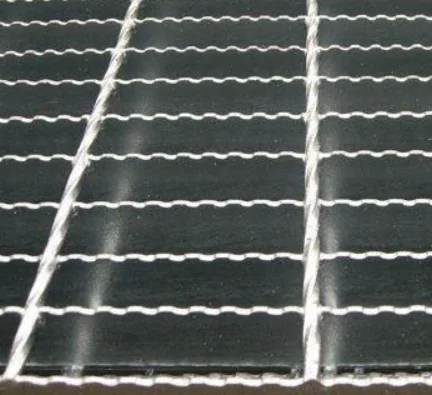Introduction
If you’re looking to construct a durable and reliable floor, wall, or fence, press-locked steel grating is the perfect solution! Learn how to fabricate your press-locked steel grating with this easy-to-follow guide.
Fabricate a steel grating with ease by following this guide on how to press-lock it: learn what materials and tools you need, and how to assemble them into a finished product. Continue reading to know more!
1. Basics of press-locked steel grating

Fabricating press-locked steel grating involves a complex process that starts with cutting the steel materials to the required size and dimension. The raw steel is then shaped into a lattice pattern and linked using a press-lock technique. The press-lock mechanism has a series of grooves and ridges that firmly link the separate pieces of steel together.
The grating is then sent through a heat-treating process that increases the strength and durability of the steel. Afterward, the grating is finished with a galvanizing or powder coating process to protect against corrosion and wear. The result is a strong and reliable press-locked steel grating that can be used in construction, engineering, and other industrial purposes.
2. The fabrication process

Prepare the raw steel material
It will be necessary to cut the raw material to the desired size and shape before it can be used to fabricate the press-locked steel grating. The cutting process may involve the use of CNC machines or other cutting methods.
The steel must be cut to the correct size. Depending on the size of the grating, this may involve cutting the steel into sheets, bars, or other shapes. If necessary, steel edges may be treated to lessen burrs or sharp edges.
The steel must be cleaned by removing any dirt, rust, or other contaminants with abrasive blasting, chemical cleaning, or other methods.
Forming of the steel components
After that, the steel components must be shaped into the proper size and shape. Press brakes, roll formers, or other forming tools can be used to do this. To get the correct shape, the steel must then be bent. This could entail bending the steel into channels, angles, or other shapes, depending on the kind of grating.
Welding of the steel components
The steel parts will need to be joined using welding after they have been manufactured. Numerous welding techniques, including MIG, TIG, and spot welding, can be used during the welding process.
The particulars of the created grating should determine the type of welding that is used. For instance, spot welding is frequently used to join thin steel sheets, whereas MIG or TIG welding is used to join heavier steel parts.

Finishing of the steel components
The steel parts need to be completed once they have been joined by welding. Numerous techniques, including sandblasting, shot blasting, and painting, can be used to accomplish this.
Press-locking of the steel components
The steel components will then need to be press-locked together. Using a high-pressure press machine is accomplished by pushing the components together. This method involves applying pressure to the grating components to join them together, creating a strong and secure joint.
The press-locking process begins by inserting the components into a press machine, where the steel grating pieces are then compressed together with a locking bar.
As the bar is pulled through the grating, it locks the edges of the bars together, creating a tight and secure bond. This process ensures that the grating is sturdy and durable, and can handle the weight of the traffic it will be subjected to.
Inspection of the press-locked steel grating
Inspect the finished press-locked steel grating for any damage or irregularities. Check for any gaps between bars or any other defects. Additionally, look for any signs of warping or distortion in the grating. If any of these symptoms are present, the grating has to be changed or fixed.
Checking the grating is necessary for any indications of cracks or other faults that could compromise its integrity. After the visual inspection, the grating should undergo a load test to ensure it meets the required load requirements.
Finishing
If desired, the press-locked steel grating can be powder-coated or hot-dip galvanized for increased durability and corrosion protection. Galvanization helps protect the steel from corrosion. This may involve dipping the steel into a hot galvanizing bath or applying a zinc coating.
Conclusion
By following these steps, you should now have a complete press-locked steel grating that is ready to be installed. Press-locked steel grating can be created using this method for any application.


